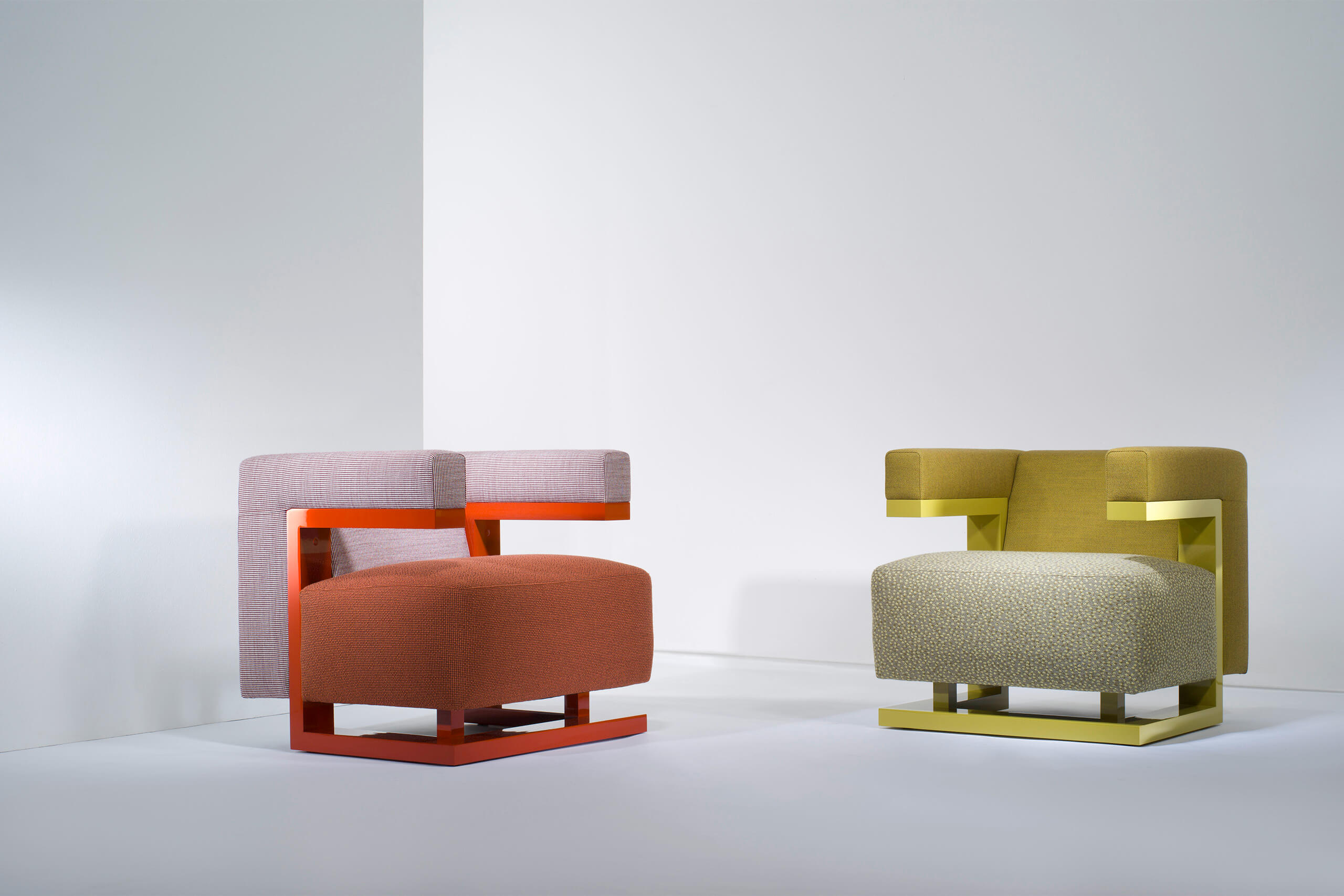



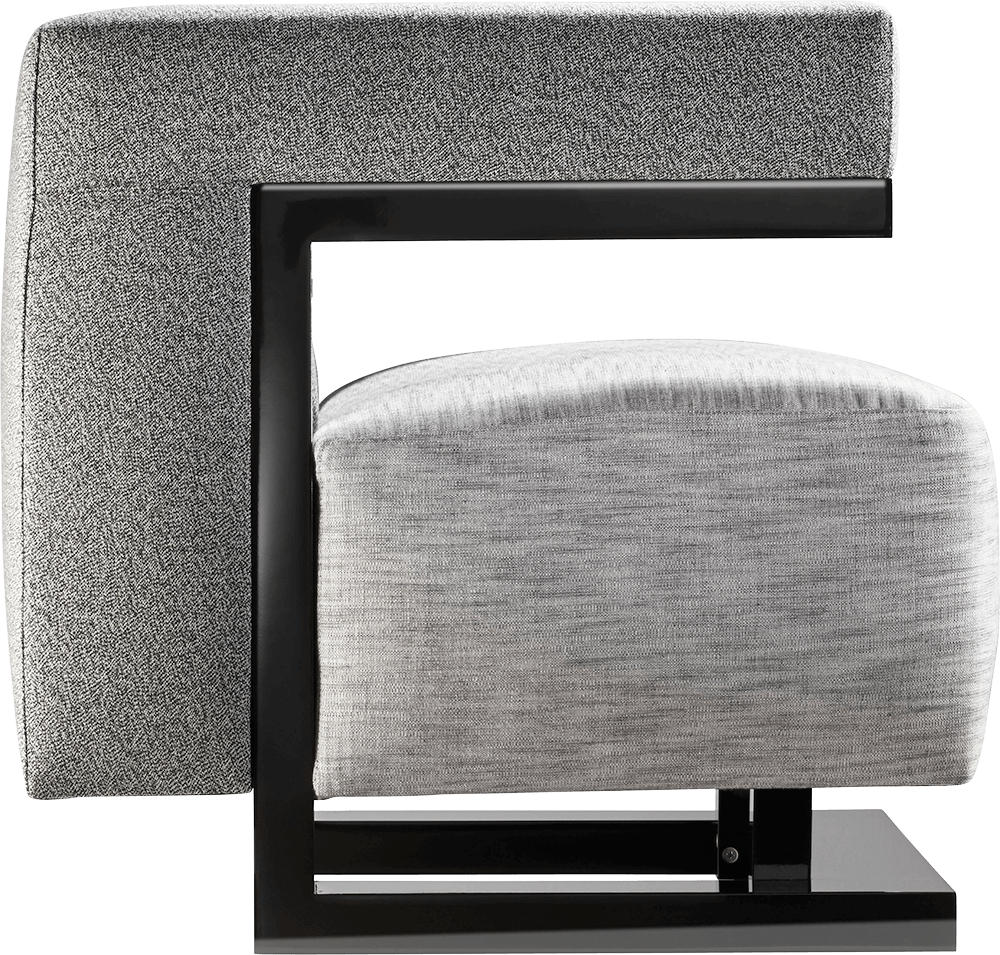

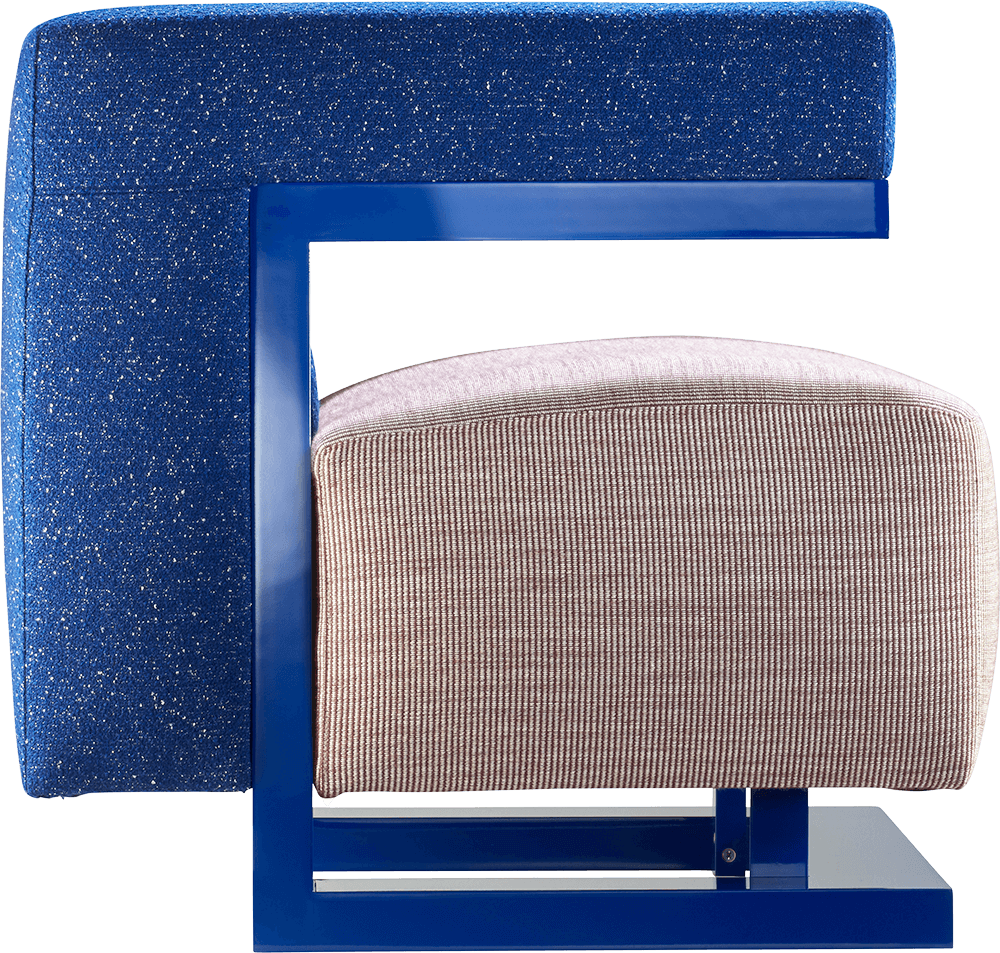



F51N
2019 & 2023
Gropius’ new clothes
It was the Roaring Twenties and there was something in the air: “Defying gravity and overcoming the earth’s inertia, in impression and appearance,” was the aim of Bauhaus founder Walter Gropius. Like the cubic cantilever design of his F51 Director’s Chair, these prophetic words stood for a new chapter of modern seating: the cantilever concept. The armrests of the F51 protruded freely and even the back of the chair did not touch the ground. A piece that embraced Lissitzky’s vision and was considered an innovation.
+ read more
- einklappen
For her new take on the F51 Katrin Greiling demonstrates how to rethink the iconic chair’s surfaces and colours. She presents the Gropius armchair in striking colour and texture combinations that change perspectives and draw attention. In doing so she has given the F51 a new face after 100 years. The fabrics she uses for this purpose were created by the Belgian fashion designer Raf Simmons for Kvadrat. Inspired by wool, twill and tweed, the collection features textures and colours that enable a transition to contemporary furniture.
Katrin Greiling divides the armchair into three design areas: frame, seat and armrest upholstery. She presents the distinctive geometrical wooden frame in six new colours realised with a high-gloss lacquer. Colour plays a major role in all her designs, and the same goes for the F51. She draws attention with colour and textures, emphasizing shapes and proportions. A primary source of inspiration for Katrin Greiling’s design approach to the task was the textile artist, Gunta Stölzl, director of the weaving workshop, whose importance to the legacy of the Bauhaus has often been overlooked. The F51 by Katrin Greiling is a marriage of geometry, colour and texture that skilfully connects the past with the present.

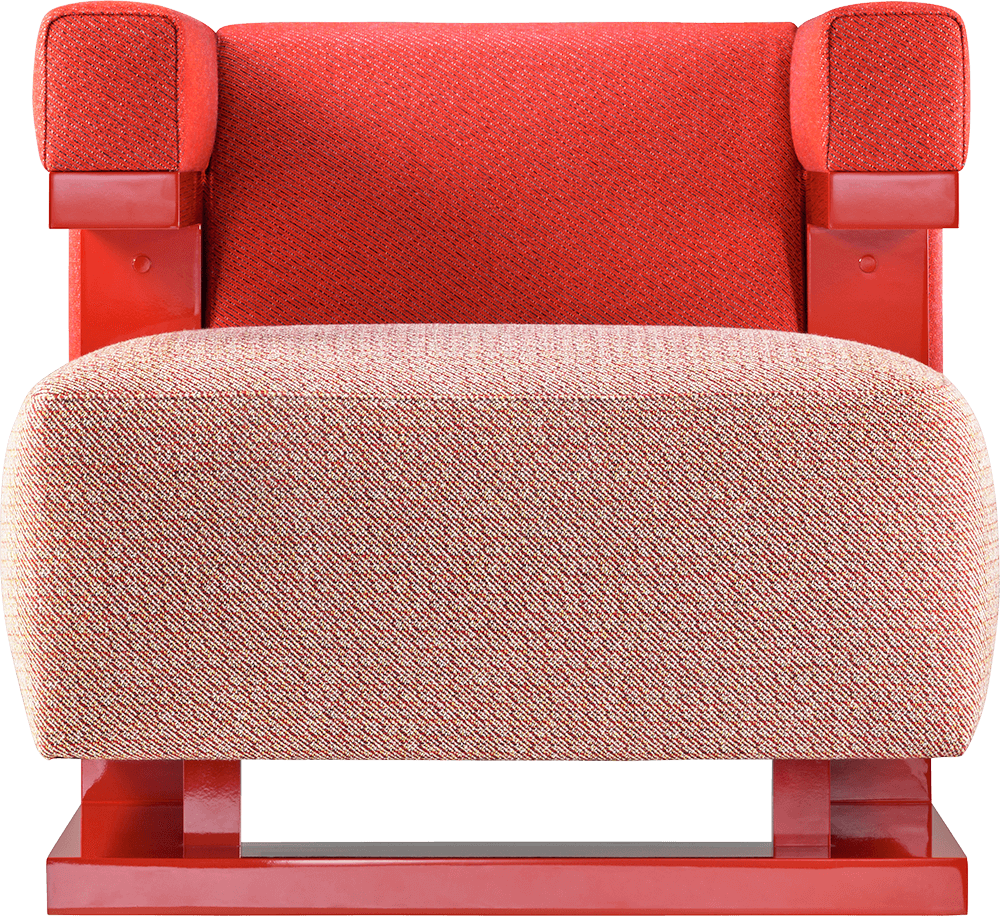
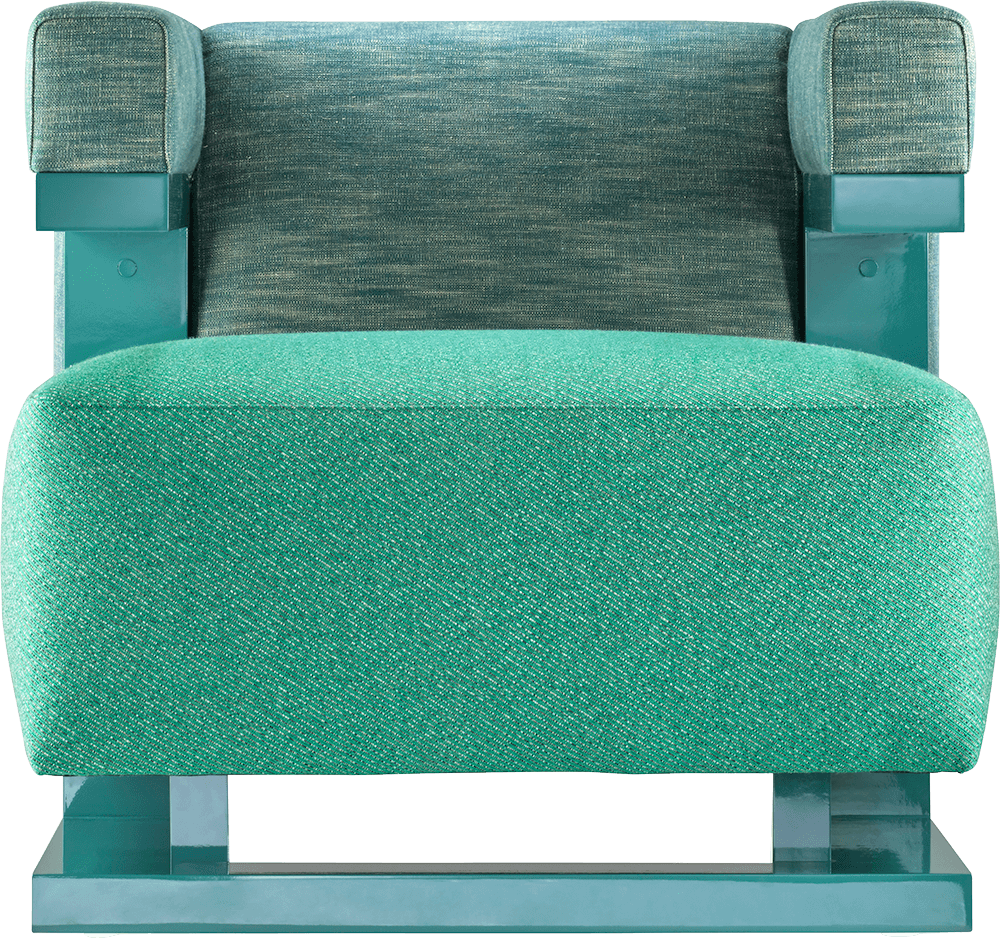

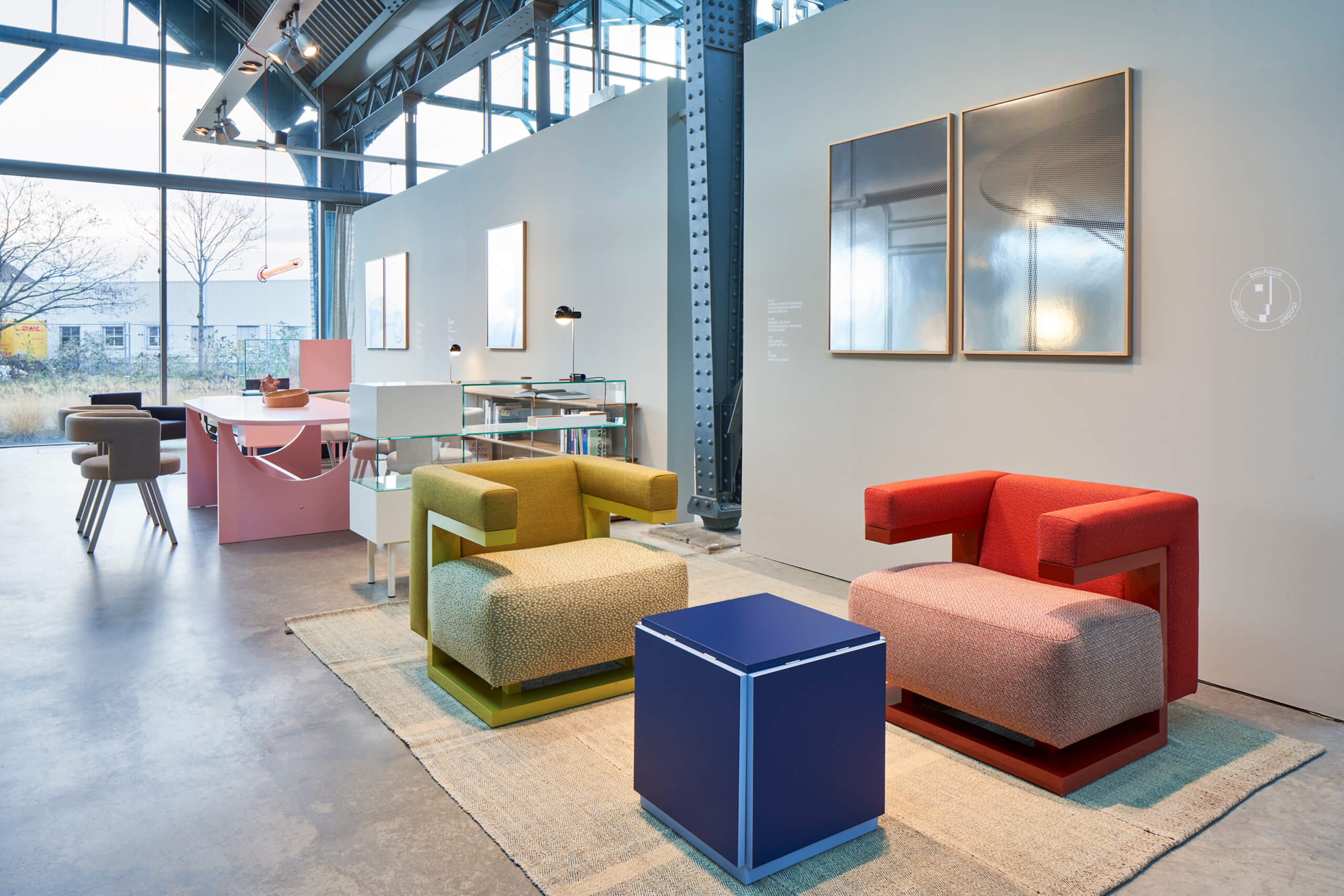
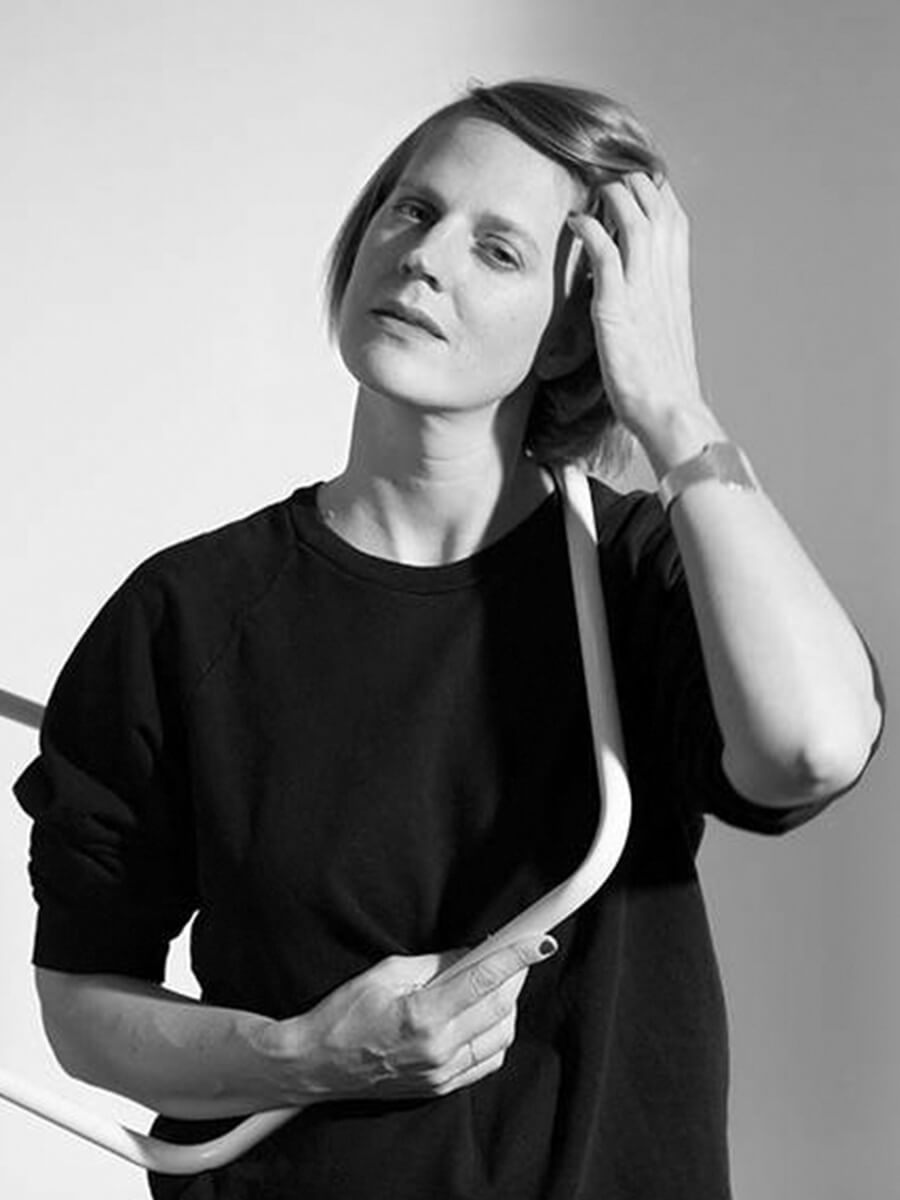
Born in Germany in 1978, Katrin Greiling left for Sweden in 1998 to study cabinet making and fine carpentry at Capellagarden. She continued her education with a 5 year master’s degree in furniture design and interior architecture at the prestigious Konstfack University in Stockholm. After graduating she started on a quest to explore design globally: During a three-year stay in Dubai she was commissioned to design global offices for a property developer. Research trips took her to Shanghai, Cairo and Istanbul. She studied the culture of the Middle East. Some important works were created during this period, including the Bidoun Sofa Series, consisting of stacked mattresses inspired by the daily life of traditional Bedouins.
+ read more
- einklappen
In 2013 she moved Studio Greiling from Stockholm to Berlin, Germany. Her work combines Furniture Design, Interior Architecture and Photography – an interdisciplinary mix, which enables her to tackle her projects from a variety of perspectives.
Studio Greiling’s creations have won numerous design awards and participate in many international projects and exhibitions. In 2010 she was featured in the first Wallpaper Handmade exhibition by the UK’s Wallpaper magazine. In 2012 she was one of the designers selected for the Halingdal 65 show by Kvadrat. Together with Etienne Descloux she developed the “Freunde von Freunden” x Vitra apartment in 2014 – a showroom and event space in Berlin. Her most recent collaboration was with Kinnasand. It took her to Milan for the Structures exhibition in April, 2018, which explored the interface between carpet and object.
In 2017 Katrin Greiling was appointed to the position of Professor of Product Design at University of Fine Arts in Saarbrücken.
Interview Katrin Greiling
Into the 21st century with colours and textures
What inspired you to give the legendary F51 by Gropius a new outfit?
Katrin Greiling: In autumn 2017 I started a project at HBK Saar with the question: How do the companies that inherited the Bauhaus legacy work with it? How do they create something new out of this heritage? I wrote to Tecta asking if they were interested in working with a university. And so a wonderful project was born, which gave me the opportunity to get to know the company and the people behind it. When we met again at imm Cologne in 2018 Christian Drescher asked me if I wanted to develop a new edition of the F51 chair by Walter Gropius.
+ read more
- einklappen
What were your first thoughts about changing the F51?
Katrin Greiling: I asked myself: How would I see the armchair in the context of contemporary furniture? I didn’t want to create a new design but rather to re-interpret and re-define the given framework of surfaces, textures and colours.
What aspect was key for your concept?
Katrin Greiling: The body of the F51 can be perceived in different ways. It consists of wooden and padded surfaces. The question that interested me was: Should one separate these surfaces with contrasts or combine them harmoniously? Colour plays a key role in all of my designs. Colour allows you to draw attention, emphasise proportions, highlight or restrain shapes. I have long been a fan of the works of textile artist Gunta Stölzl. She was a contemporary of Walter Gropius and director of the weaving workshop, whose importance to the legacy of the Bauhaus has often been overlooked.
Was it Stölzl’s works in particular that gave you further inspiration?
Katrin Greiling: Gunta Stölzl’s art inspired me to continue working with monochrome and patterned surfaces, the texture of the woven fabric and a more nuanced choice of colours. As a contrast to the tactile Kvadrat fabrics, I chose a high-gloss lacquer for the wooden elements of the armchair, concealing the structure of the underlying material. The source of inspiration for this was traditional urushi lacquerware from Japan. The materials provide stark contrasts that merge into a balanced piece of furniture.
Why did you use fabrics by Kvadrat?
Katrin Greiling: I like Kvadrat’s use of colour, material and tactility. I have been working with the Danish company on various projects for many years and I know their collections. I already had some of the fabric samples in my studio, and after talks with Kvadrat I made my selection for the new edition of the F51.
Is there a connection between your work and the Bauhaus idea?
Katrin Greiling: The crafts-based approach plays an important role and sets the tone for later designs. In teaching I attach great importance to an understanding of materials and construction. My own education followed a similar path; before studying furniture design in Stockholm I trained as a cabinet maker for two years. Like at the Bauhaus, the workshop was my workplace.
Is there anything you can improve in a classic?
Katrin Greiling: The F51 is an icon, so it was never a question of changing the basic structure, but rather one of focusing on the contrast between the soft padded and hard structural surfaces. I took the chair apart and explored the question: How can I modify this precise given framework? It is an attempt to take the chair out of time and make it part of a contemporary setting in a manner that defies the fact the F51 is a 100 year-old design. The important thing was not to change the basic structure of the easy chair, so that it can still be manufactured by Tecta in its regular production flow, respecting the history of the piece and the work it takes to produce it today.
